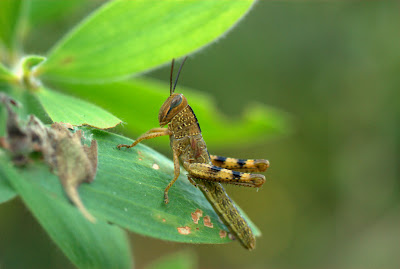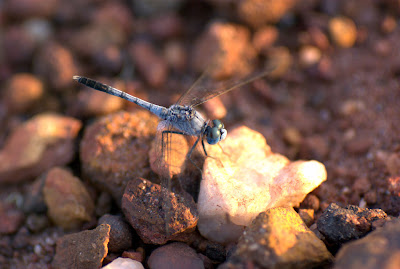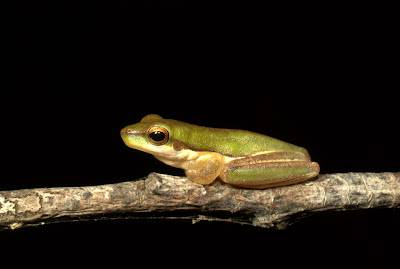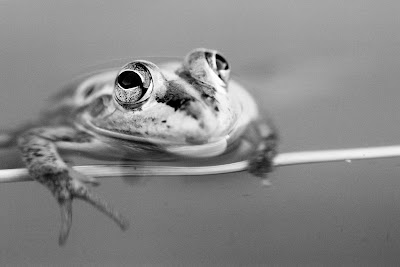





The new camera is the Pentax K10D by the way. First impression is that I'll have a lot of fun with it!
My photos of the natural world's inhabitants, juxtaposed with what I've discovered about them.
 Visitors to Fogg Dam that know a bit about herps generally try to see two animals that are almost icons of the place. One of these is the Water Python, Liasis mackloti. These snakes occur at incredibly high densities in the floodplains of this region, feasting on the staggeringly abundant Dusky Rats (Rattus colletti). The biomass of these two species is said to exceed that of an equal area of the Serengeti plains. But I digress.
Visitors to Fogg Dam that know a bit about herps generally try to see two animals that are almost icons of the place. One of these is the Water Python, Liasis mackloti. These snakes occur at incredibly high densities in the floodplains of this region, feasting on the staggeringly abundant Dusky Rats (Rattus colletti). The biomass of these two species is said to exceed that of an equal area of the Serengeti plains. But I digress. But firstly, who was Dahl? A bit of googling turned up a Knut Dahl, a native of Norway, who did some exploring and collecting in this part of Australia, including Arnhem land, in the late 19th century. Not sure of his connection to the species' describer, George Boulenger (who seems to have been quite a clever character), though I suppose that it's possible Knut was the collector of the species.
But firstly, who was Dahl? A bit of googling turned up a Knut Dahl, a native of Norway, who did some exploring and collecting in this part of Australia, including Arnhem land, in the late 19th century. Not sure of his connection to the species' describer, George Boulenger (who seems to have been quite a clever character), though I suppose that it's possible Knut was the collector of the species. You might recognise some similarities to other Australian frogs - the 'complex' of frogs that this species belongs to is the Bell Frogs, containing things like Sydney's endangered Green and Golden Bell frog (Litoria aurea) and the Motorbike frog of WA (Litoria moorei). All the frogs in this rough group seem to be rather aquatic, though if I'm not mistaken L. dahlii is the most so. A further trait of the group is some daytime activity, and this is true of L. dahlii too - I've seen them basking in the afternoon sun out at Fogg dam.
You might recognise some similarities to other Australian frogs - the 'complex' of frogs that this species belongs to is the Bell Frogs, containing things like Sydney's endangered Green and Golden Bell frog (Litoria aurea) and the Motorbike frog of WA (Litoria moorei). All the frogs in this rough group seem to be rather aquatic, though if I'm not mistaken L. dahlii is the most so. A further trait of the group is some daytime activity, and this is true of L. dahlii too - I've seen them basking in the afternoon sun out at Fogg dam.